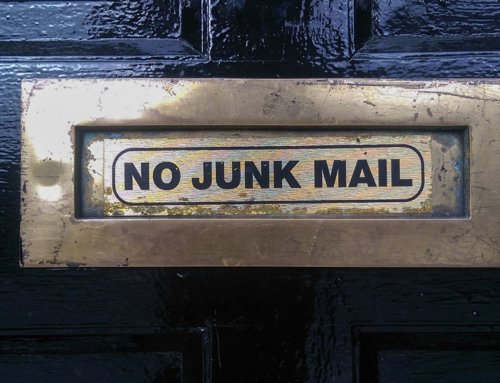The internet has changed the face of marketing. Where even 25 years ago advertisements were a sure bet, these days people tend to tune them out. The average person is bombarded with around 5,000 ads a day, so it’s easy to see why people might be turning them a blind eye. But if ads aren’t as effective as they used to be, what can you use to spread the word about your business?
The answer is to go where all the consumers have gone—to the internet.
Google alone processes over 40,000 search queries every second. That’s over 3.5 billion a day. People use search engines like Google for everything, and if you want to be found in the digital age, you need to be showing up on those search engine result pages (SERPs). More importantly, you need to be found by users in your area. Making yourself easier to find for those local users is called local Search Engine Optimization (SEO).
A little local SEO magic goes a long way. You’ll show up in search results when people look specifically for your business. You’ll show up when they look for your product or services in your area. And, done properly, local SEO can put you on the map (literally)—you’ll show up on GPS directions. In an age where most buyer decisions are made at the speed of “(insert industry) near me,” you can’t afford to be absent when those results pull up.
Local SEO Citations
The first weapon in your arsenal for boosting your local SEO is local citations. Citations are business directory listings, and though most of them go unseen by the consumer, they’re an important part of the process. There’s a host of directories (of which Google My Business and Yelp are just the tip of the iceberg), and you’ll want to input your information into most of the major ones if you want to rank well in SERPs.
It’s a lot of grunt work, but Google will respond positively to your efforts, and customers will start finding you online.
It’s easy work, but it’s somewhat tedious, to plug in all of your business information into all these different sites. You can do it yourself, or you can get companies like Brightlocal to do it (though you’ll have to pay for the service). Either way, there’s some etiquette you’ll need to follow if you want the citations to have a positive effect on your SEO.
First, have a standard NAP (Name, Address, Phone number) format. This is key; a hiccup here will confuse the search engines and hurt your results. Make sure your NAP is consistent across the board. Second, avoid toll-free numbers, as they make you look less like a local business, and more like you cater to far away customers. If you must list a toll-free number, don’t list it as your primary.
Third, be sure to fill in information like holiday hours (customers will be wondering if you’re open), website address (if you don’t have a website, your business is effectively invisible), Q&A, and so forth. It’s a lot of grunt work, but Google will respond positively to your efforts, and customers will start finding you online as a result.
Capturing Keywords—How to Show Up on Google
After you’ve managed citations, you’ll want to start capturing keywords. When users do a search for things you sell, they’re often not looking for a specific business. So, to help them find you, you have to teach Google to associate your business with that topic. Without capturing relevant keywords, users will only find you if they look up your specific business name.
Without capturing relevant keywords, users will only find you if they look up your specific business name.
When picking keywords for local SEO, you’re looking for two things: first, you’re trying to capture the topic (as in “hot tubs”). Second, you’re trying to capture the location (like Albuquerque). You’ll end up with keywords that look something like this: “hot tubs in Albuquerque.” You’ll also want to capture phrases like “near me” and “near (insert city, state, zip, etc.).” Keep in mind, too, that customers may look for terms like “hot tub ratings,” or “hot tub reviews” before they look for the product itself. Consider using such terms on your site.
The way you capture these keywords is by creating content. Things like videos, podcasts, blog posts, and even website copy all count as content. When you create your content, build it around the topics your keywords cover. That way, the keywords will be used naturally in the course of the content, and your site will thus start ranking for those keywords.
Avoid content faux pas like “keyword stuffing,” (overusing or shoehorning keywords into content unnaturally). They don’t help; rather, they tend to do the opposite. Likewise, avoid creating content that duplicates content you already have (especially word for word), content that plagiarizes, and unoriginal content.
Customer Reviews
Google still hasn’t fully explained just how customer reviews factor into the search algorithm, but it’s clear they do. Having consumer reviews, and having a larger number of positive reviews, is important to your rankings. The reason for it is pretty obvious: people are making buying decisions based off the experience of others. 85% of users trust online reviews, so encourage your customers to leave reviews.
Before you start panicking about the negative reviews you might receive from disgruntled customers, consider this: 30% of users indicate that how a business responds to negative reviews is integral to their decision whether to use a business or not. What’s more, if the negative review is accurate, it’s a chance to do a little quality control and fix what’s amiss.
30% of users indicate that how a business responds to negative reviews is integral to their decision whether to use a business or not.
To really boost your local SEO, try encouraging your customers to use your relevant keywords in their reviews. Or, you can use those keywords yourself in your responses. Either way, try to get them worked in naturally to get the benefit you’re looking for.
Schema
Lastly, if you have a website, be sure your schema is in order. Schema is like the dashes in a phone number—it helps the search engine understand your information online. Defined, a schema is “the structure behind data organization…a visual representation of how different table relationships enable the schema’s underlying mission business rules for which the database is created.”
Setting up schema properly takes a certain amount of web dev know-how, so it’s not something the layman can really help with. It’s still important despite that. If you want to see an example of what schema looks like, go to schema.org.
There it is, your crash course on local SEO. By implementing the tactics in this article, you should see a measurable improvement in your search result rankings, and thus, increased foot traffic to your business.
When it comes to Local SEO, if you’re not improving your local presence through citations, reviews, and schema then you are missing out on staying ahead of your competitors. For information on Local SEO, contact Big Leap today and see how we can help your hot tub dealership.









Leave A Comment